Step ladders are a common household and industrial tool, serving various purposes from reaching high shelves to performing maintenance tasks.
As these ladders age or become damaged, the question arises: can step ladders be recycled?
In this comprehensive guide, we will delve into the intricacies of step ladder recycling, exploring the types of step ladders, the materials they are made of, and the potential challenges and opportunities for recycling.
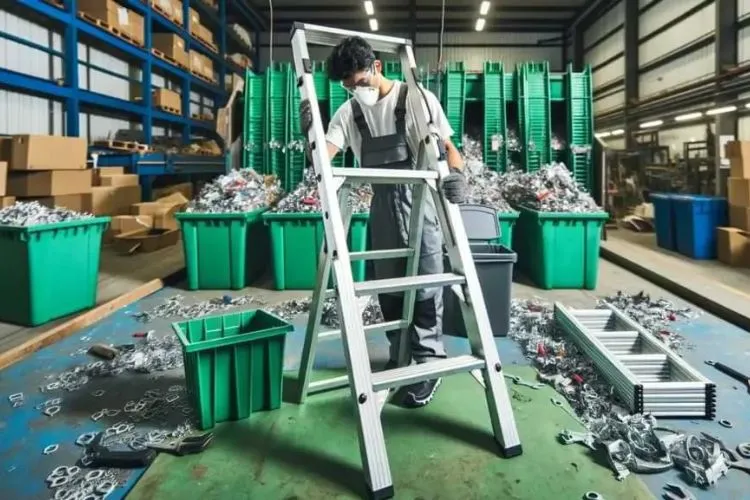
We’ll also provide essential tips for safely recycling step ladders and answer frequently asked questions.
Can Step Ladders Be Recycled?
Yes, step ladders can be recycled, but the feasibility depends on the ladder’s material and condition. Aluminum step ladders are highly recyclable and can be melted down to create new products after removing non-aluminum components.
Wooden step ladders can also be recycled, typically as wood waste. However, you must remove any metal hardware and ensure the wood is clean and free from contaminants.
Fiberglass step ladders, due to their composite nature, may have limited recycling options and require specialized facilities. To recycle step ladders safely, prepare them by cleaning, disassembling if possible, and removing attachments.
Research local recycling centers that accept step ladders and inquire about their specific requirements. Alternatively, consider donating or repurposing usable step ladders to reduce waste and extend their lifespan.
Understanding Step Ladders
Step ladders come in different types, each designed to cater to specific needs:
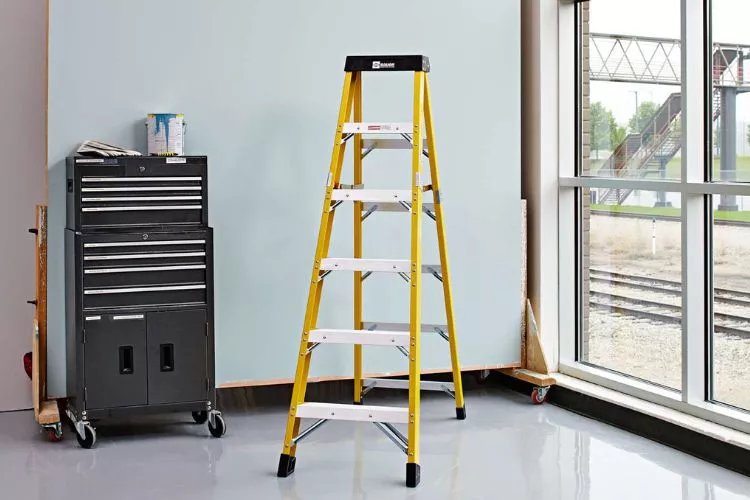
Folding Step Ladders
Folding step ladders are versatile and highly portable. They consist of hinged sections that fold into a compact form for easy storage. These ladders are typically made from aluminum or steel, which makes them lightweight yet sturdy.
Extension Step Ladders
Extension step ladders, also known as telescoping ladders, are adjustable in height. They are commonly used for outdoor tasks like trimming trees or cleaning gutters. These ladders are typically made from aluminum or fiberglass, offering durability and resistance to weather conditions.
Platform Step Ladders
Platform step ladders feature a large working platform at the top, providing stability and convenience for tasks that require extended periods of work. They are usually constructed using aluminum or fiberglass and are popular choices for indoor maintenance or painting projects.
Common Materials Used
The materials used in manufacturing step ladders play a significant role in determining their durability and recyclability:
Wood
Wooden step ladders are classic and often used for aesthetic or nostalgic reasons. They are usually constructed from hardwoods like oak or pine. While wood is a renewable resource, recycling wooden step ladders can be challenging due to the need to separate nails, screws, or metal brackets from the wood.
Aluminum
Aluminum step ladders are favored for their lightweight nature and resistance to rust. Aluminum is highly recyclable, and recycling facilities can efficiently process aluminum ladders. However, it’s essential to remove any plastic or rubber components before recycling.
Fiberglass
Fiberglass step ladders are prized for their electrical insulation properties, making them suitable for electrical work. Recycling fiberglass can be challenging because it’s a composite material, but some recycling centers accept fiberglass ladders if they are free of contaminants.
Lifespan of Step Ladders
The lifespan of a step ladder depends on factors such as material quality, frequency of use, and proper maintenance. Well-maintained step ladders can last for many years, providing value for homeowners and professionals alike.
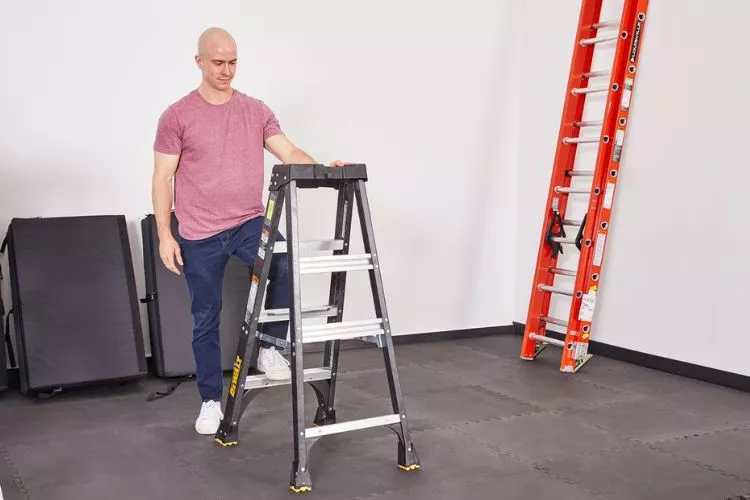
When a step ladder reaches the end of its useful life or becomes damaged, it’s essential to explore recycling options to reduce its environmental impact.
Recycling Basics
Before delving into step ladder recycling specifics, it’s crucial to understand the fundamentals of recycling:
What Is Recycling?
Recycling is the process of collecting, processing, and reusing materials to create new products. It reduces the need for raw materials, conserves energy, and minimizes waste in landfills.
Benefits of Recycling
Recycling offers several benefits, including reducing greenhouse gas emissions, conserving natural resources, and promoting sustainable manufacturing practices. It also creates jobs and stimulates economic growth in recycling industries.
Environmental Impact of Step Ladders
Step ladders, like many products, have an environmental footprint. The materials used in their construction and the energy required for manufacturing contribute to this footprint.
Recycling step ladders can help mitigate these impacts by diverting materials from landfills and reducing the demand for new resources.
Can Step Ladders Be Recycled?
Recycling step ladders may present some challenges due to the following factors:
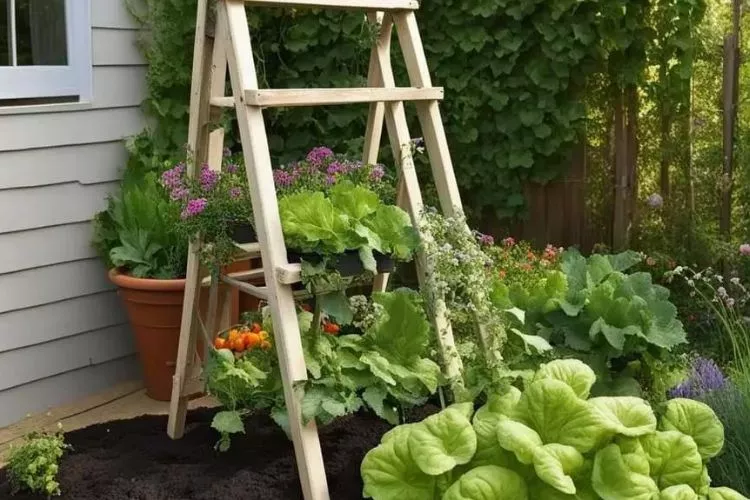
Mixed Materials
Many step ladders consist of multiple materials, including wood, metal, and plastic. Separating these materials for recycling can be labor-intensive and may require specialized processing equipment.
Size and Shape
Step ladders come in various sizes and shapes, which can make transportation and processing at recycling facilities more complex. Some facilities may not accept larger or bulkier ladders.
Contamination
Contaminants such as paint, adhesives, or other chemicals can hinder the recycling process. Properly cleaning and preparing step ladders for recycling is essential to avoid contamination.
Potential Recycling Options
Despite the challenges, there are potential recycling options for different types of step ladders:
Wood Step Ladders
Wooden step ladders can often be recycled at facilities that accept wood waste. It’s crucial to remove any metal hardware and ensure the wood is clean and free from contaminants. Some recycling centers may use wood waste to produce mulch or biomass energy.
Aluminum Step Ladders
Aluminum step ladders are highly recyclable. Remove any non-aluminum components such as plastic or rubber before taking them to a recycling facility. The recycled aluminum can be melted down and used to manufacture new products.
Fiberglass Step Ladders
Recycling fiberglass step ladders can be more challenging due to their composite nature. However, some specialized recycling centers may accept fiberglass materials. Check with local facilities for their specific requirements.
Recycling Step Ladders Safely
Recycling step ladders can be done safely and responsibly by following these steps:
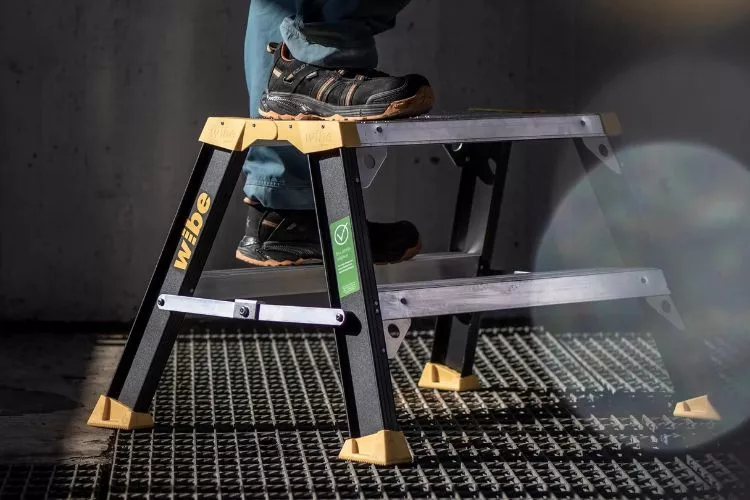
Preparation
- Clean the ladder to remove dirt, grime, and contaminants.
- Remove any attachments or accessories from the ladder.
- Disassemble the ladder if possible to facilitate recycling.
Local Recycling Facilities
- Research local recycling centers or facilities that accept step ladders.
- Contact the facility to inquire about their requirements and whether they accept your specific type of ladder.
Donation or Reuse Options
- Consider donating usable step ladders to non-profit organizations, schools, or community groups.
- Explore creative reuse options, such as turning old step ladders into decorative shelving or plant stands.
Frequently Asked Questions (FAQs)
Let’s address some common questions related to step ladder recycling:
Can I recycle a damaged step ladder?
Yes, damaged step ladders can be recycled. However, ensure that you follow the preparation steps mentioned earlier to make the recycling process more manageable.
What should I do if my step ladder is made of mixed materials?
Separating the materials as much as possible is essential. Remove any metal, plastic, or rubber components and dispose of them separately if they are not recyclable.
Are there any creative upcycling ideas for old step ladders?
Yes, old step ladders can be repurposed into decorative elements, such as bookshelves, plant stands, or towel racks. Get creative and give your ladder a new lease on life.
How can I find a recycling facility that accepts step ladders?
Start by searching online for recycling centers in your area. Contact them directly to inquire about their acceptance of step ladders and any specific guidelines.
Is it more sustainable to repair a step ladder instead of recycling it?
Repairing a step ladder can be a sustainable option if it prolongs its life and functionality. However, if the ladder is extensively damaged or unsafe, recycling may be the more environmentally friendly.
Conclusion:
The recyclability of step ladders depends on their material composition and the availability of suitable recycling facilities. Aluminum step ladders stand out as the most readily recyclable option, followed by wooden ladders with some effort. Fiberglass ladders, due to their composite nature, pose greater recycling challenges.
Nevertheless, responsible disposal practices can significantly reduce the environmental impact of old or damaged step ladders. Whether through recycling, donation, or creative upcycling, making conscious choices regarding step ladder disposal contributes to a greener and more sustainable future.
By considering the options and adhering to recycling guidelines, we can ensure that step ladders, like any other product, find a second life or are repurposed in an environmentally friendly manner.


